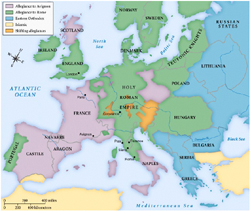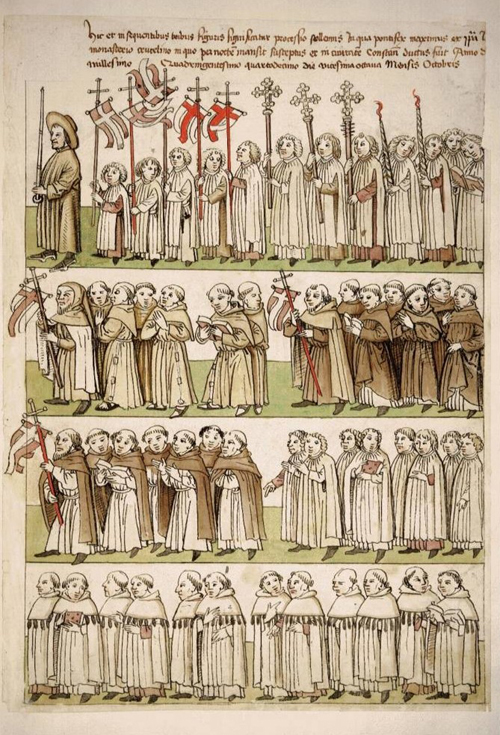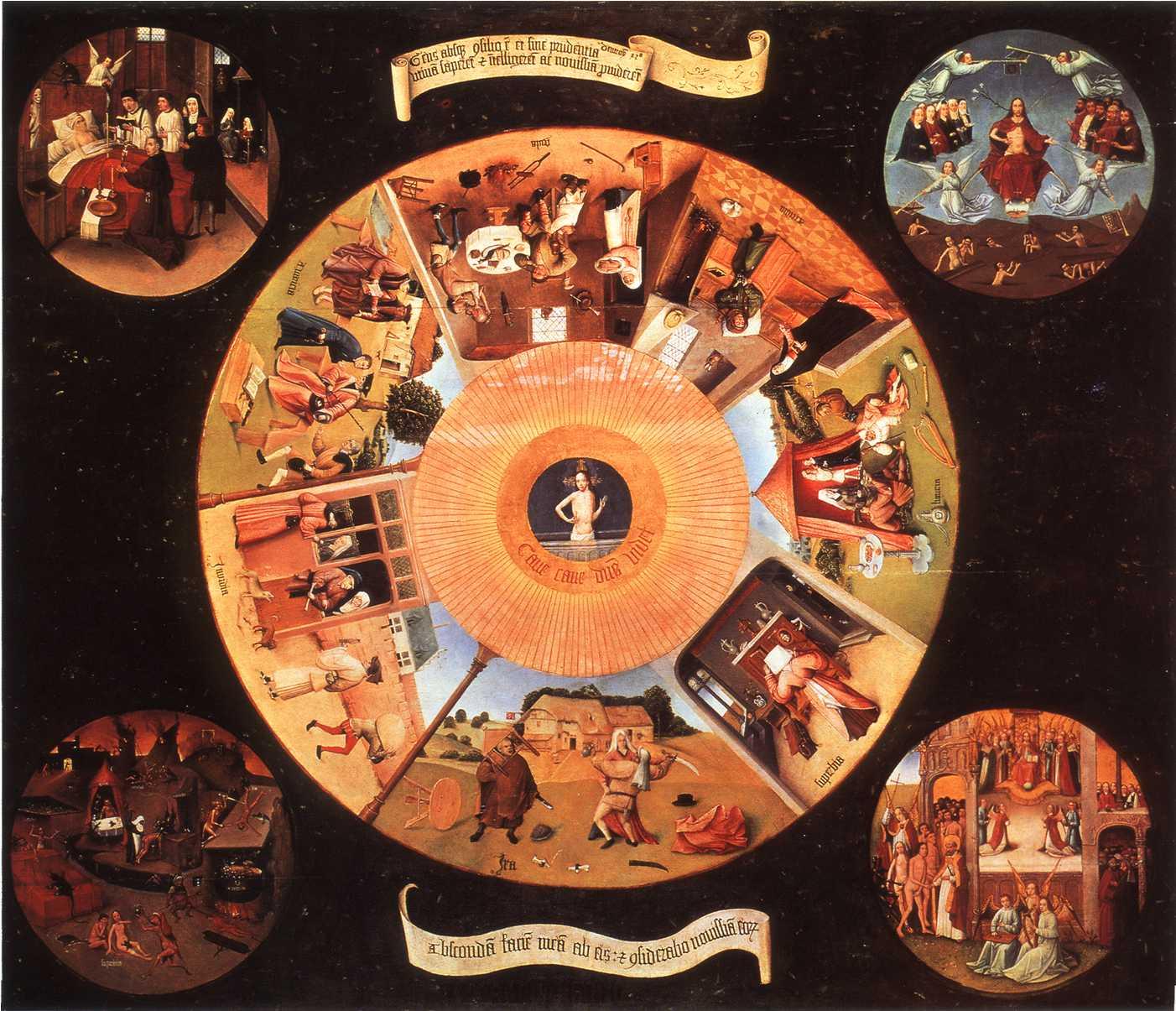Order and Disorder in Late Medieval Europe
Textbook Readings: Lindberg, 2; McGrath, chapter 2. For reference, also consult the Primer: Reforming the Holy Roman
Empire;
and the Primer: The Institutional
Structure of the Holy Roman Empire
Read and prepare for discussion in class:
- Tuesday: Anon., Reformatio Sigismundi (c. 1438) (Blackboard)
- Thursday: Eamon Duffy “The Mass” (Blackboard)
I. Religion & Reform in Fifteenth-Century Europe
A. A Priest of One's Own: Communal Endowments in Fifteenth-Century Europe
B. Embracing Christianity
1) Mass Pilgrimage
2) Parochial Appointment
Map: The pilgrimages of Margery Kempe
Image: Pilgrim Badge, Canterbury, 12th C.
II. Discussion: The Reformatio Sigismundi (c. 1438)
III. Body Politics: Reforming the Church
A. Reforming Bishops
B. Reforming Institutions: The Great Western Schism and the Conciliar Movement
C. Observantine Orders
IV. A Crisis of “Secondary Responsibilities”?
A. Economic Strains on the Church
1. Church Incomes—Spiritual and
Temporal
2. Structural Contradictions
3. The Abuse of Priestly Status
B. The Burdens of “Bureaucratic Inflation”

Map: The Great Schism (1378-1417/1437). Image
right: A procession of clergymen attending the Council of Constance
(1414-1417), from the Chronicle of the Council of Constance by
Ulrich
von
Riechental
(UNESCO).


